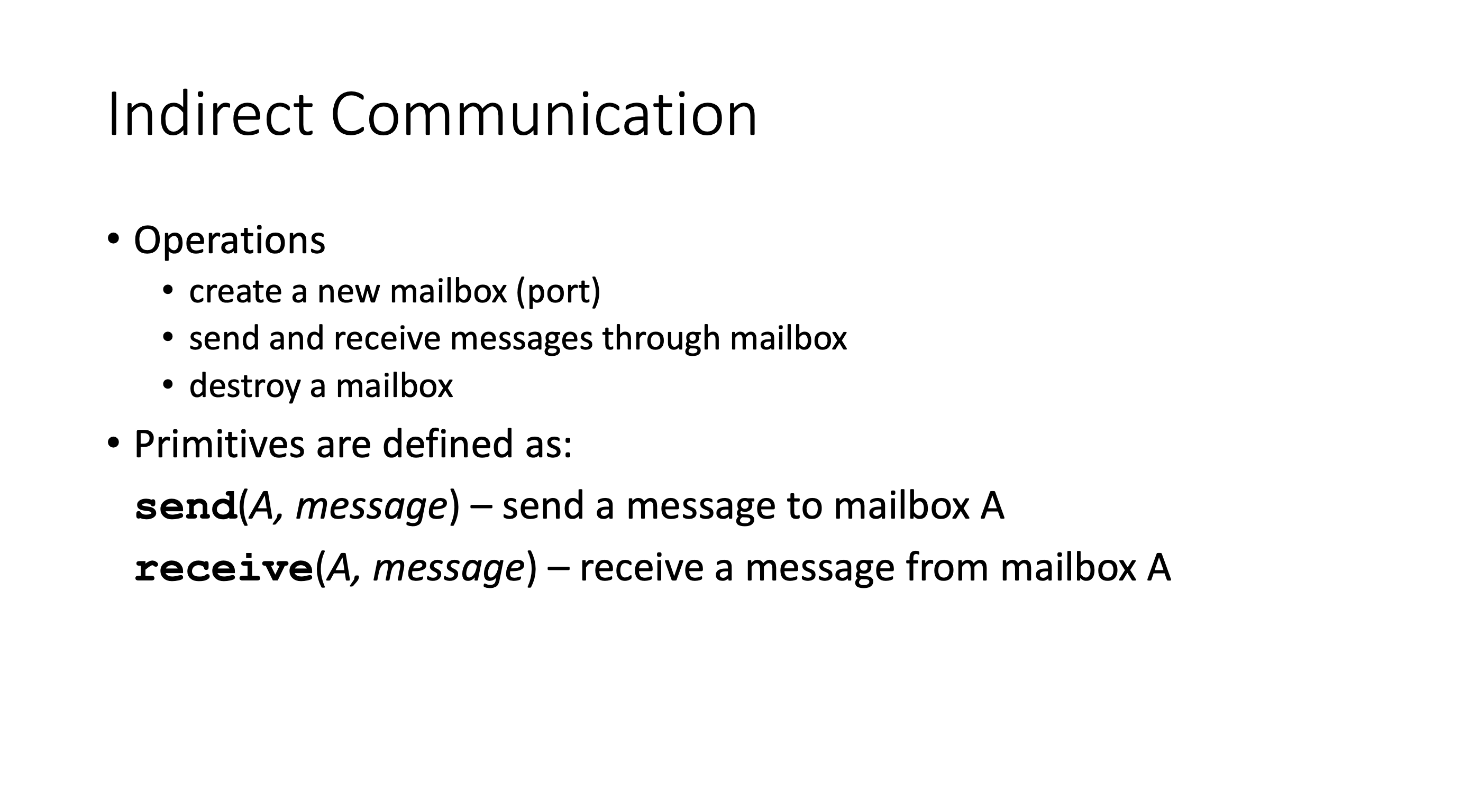Processes cont. #
Termination #

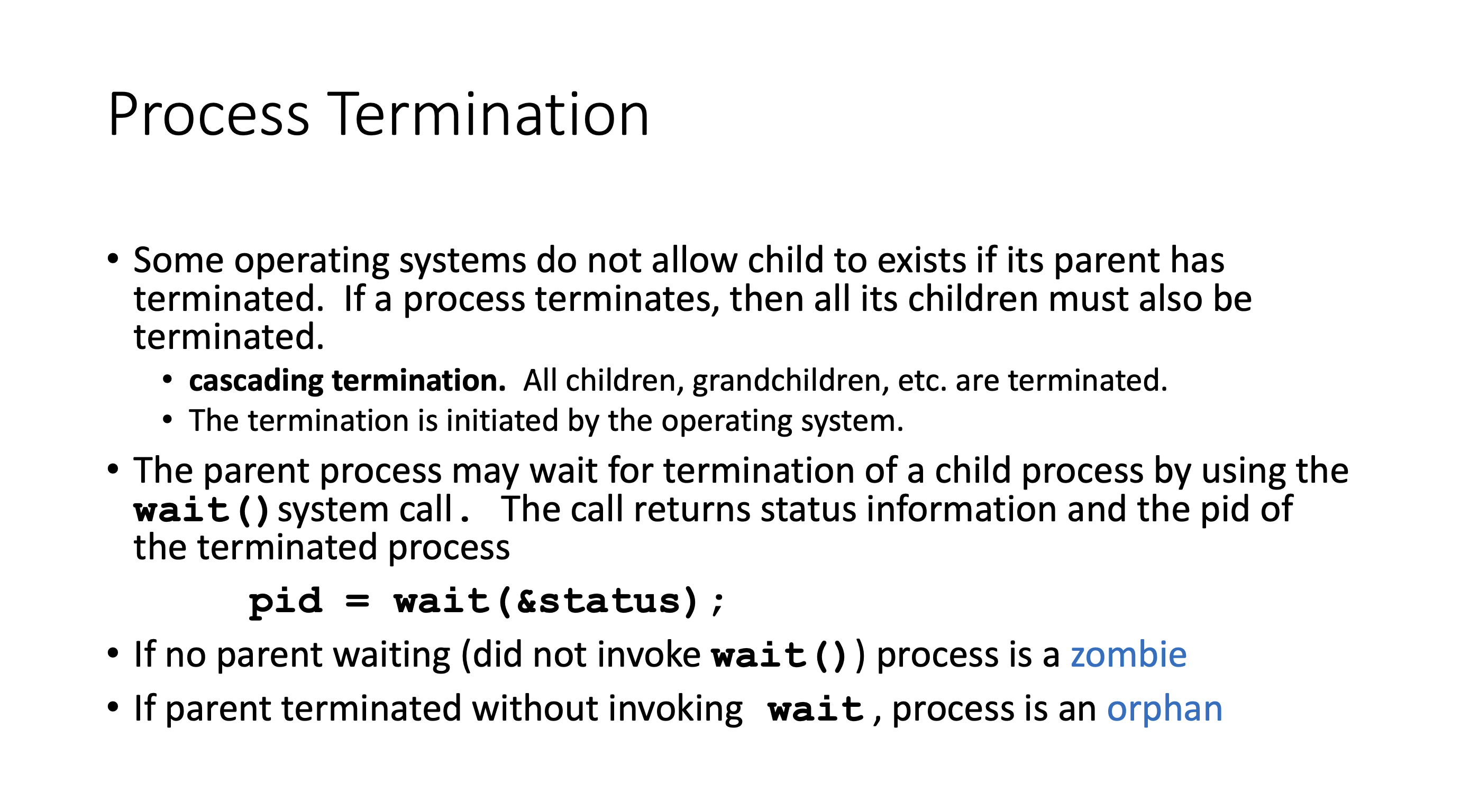
A parent cannot wait on a grandchild.
Inter-process communication #
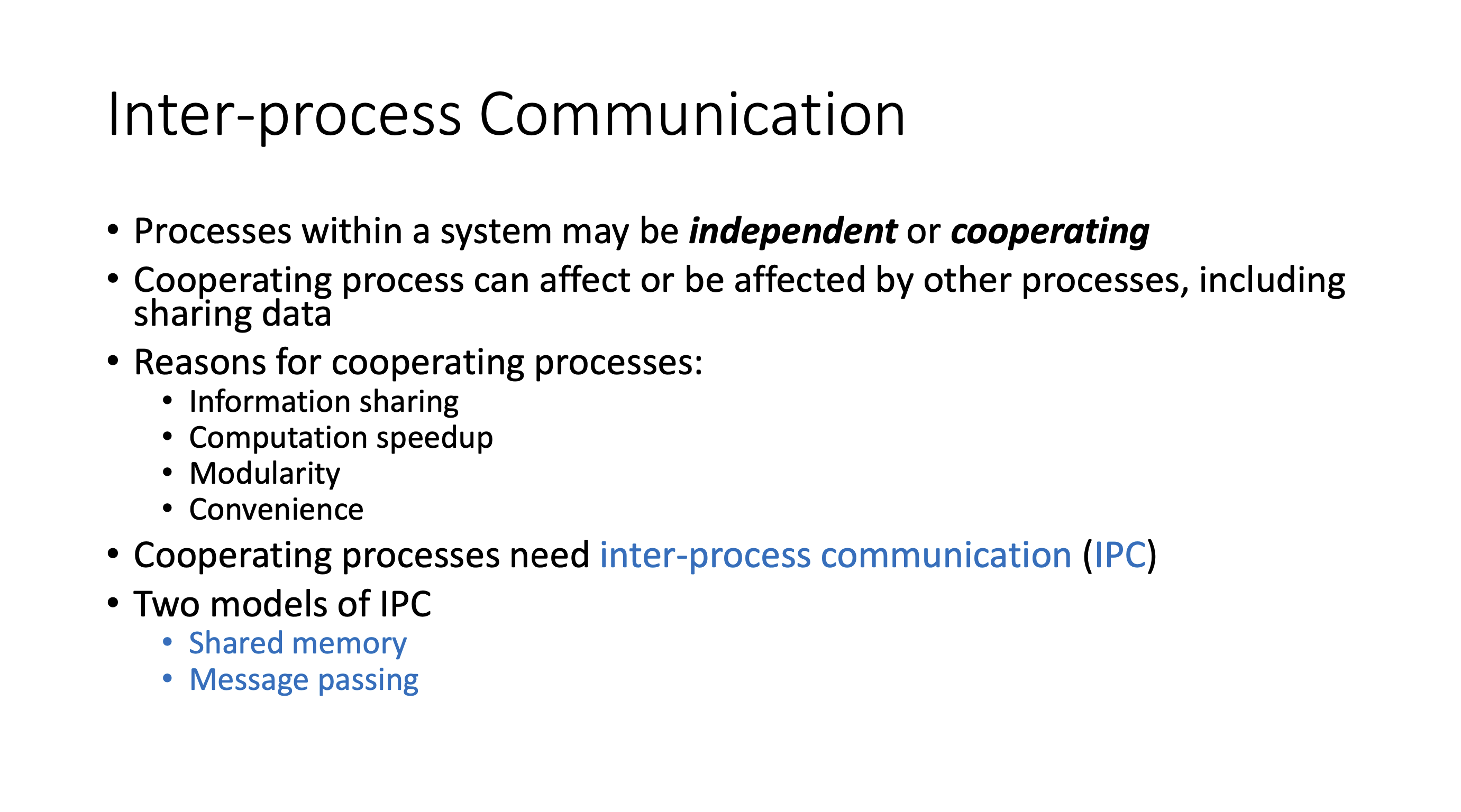

Message passing
- uses
sendandreceieveAPI calls - slower, more expensive
- small amount of data distributed
Shared memory
- process A sets aside some memory for process B
- restrictions must be lifted by kernel
- faster and cheaper because minimal kernel involvement
- doesn’t work for distributed systems (2 processes on remote machines)

Shared memory communication #


This uses a circular buffer:


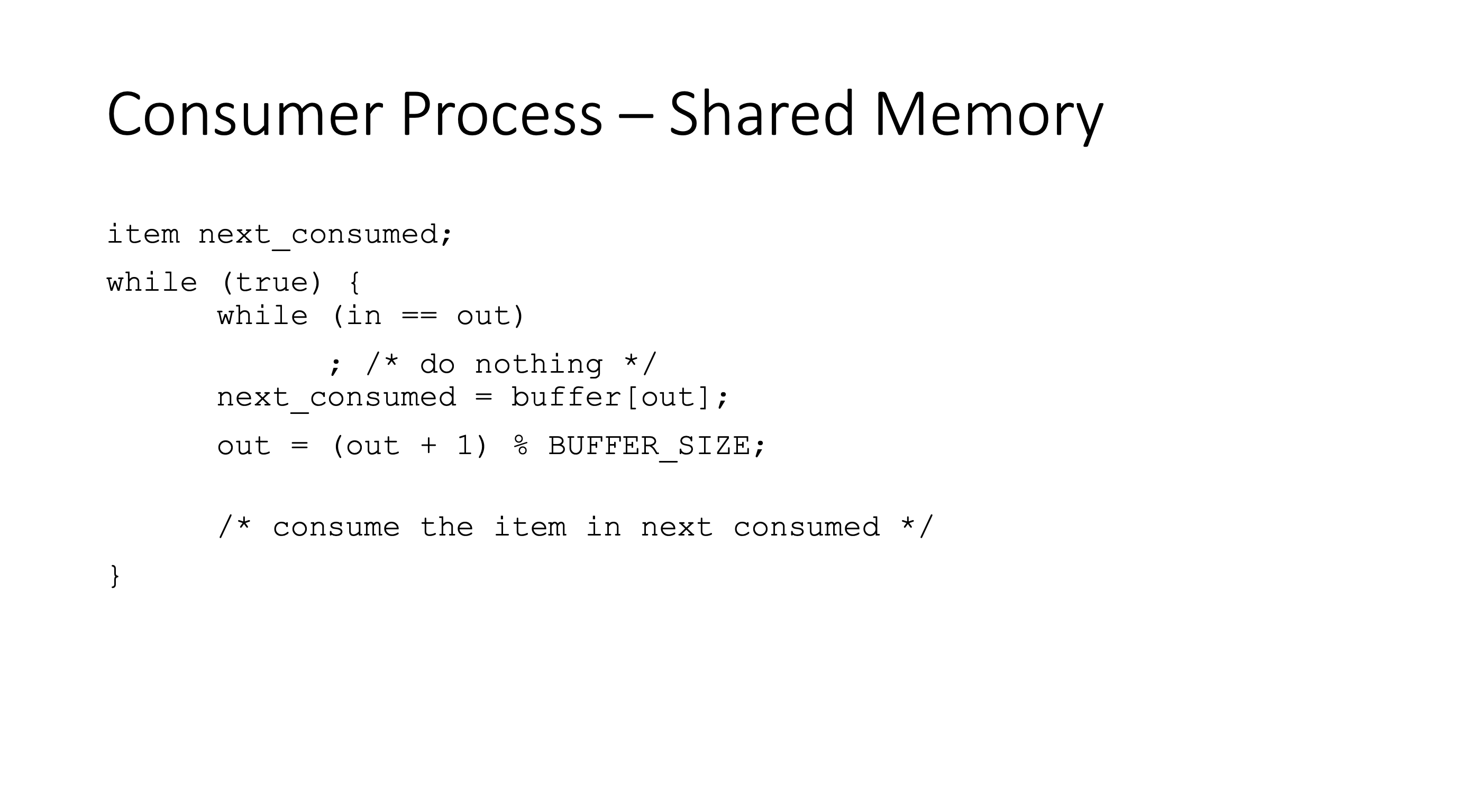
We can only hold BUFFER_SIZE - 1 items, because we don’t want in and out to point at the same item when the buffer is full.
in == out indicates that the buffer is empty.
If we add BUFFER_SIZE items, then in == out and it’ll get stuck in the consumer’s while loop.
If we introduce a counter, we can utilize the entire buffer.
Message passing memory communication #
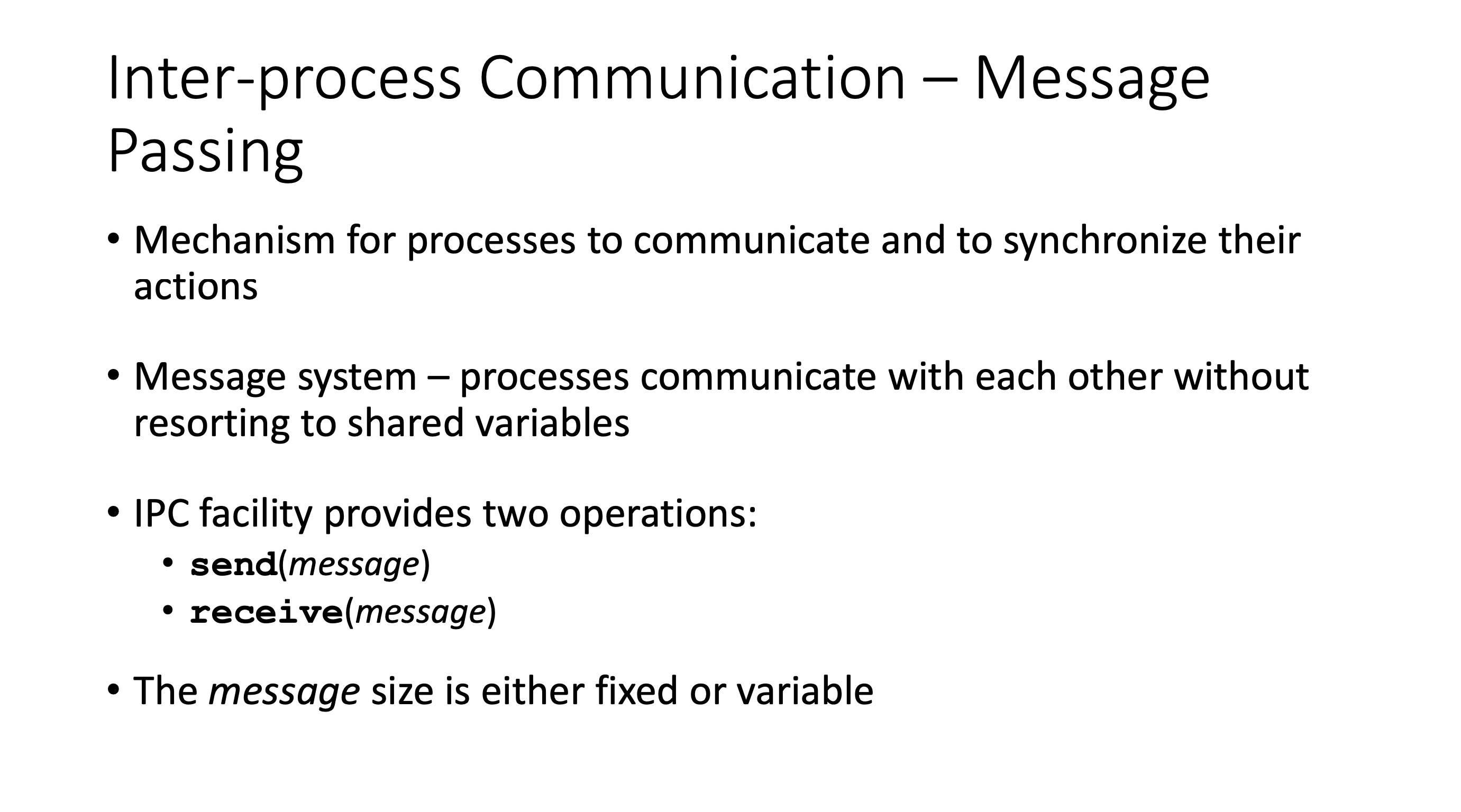
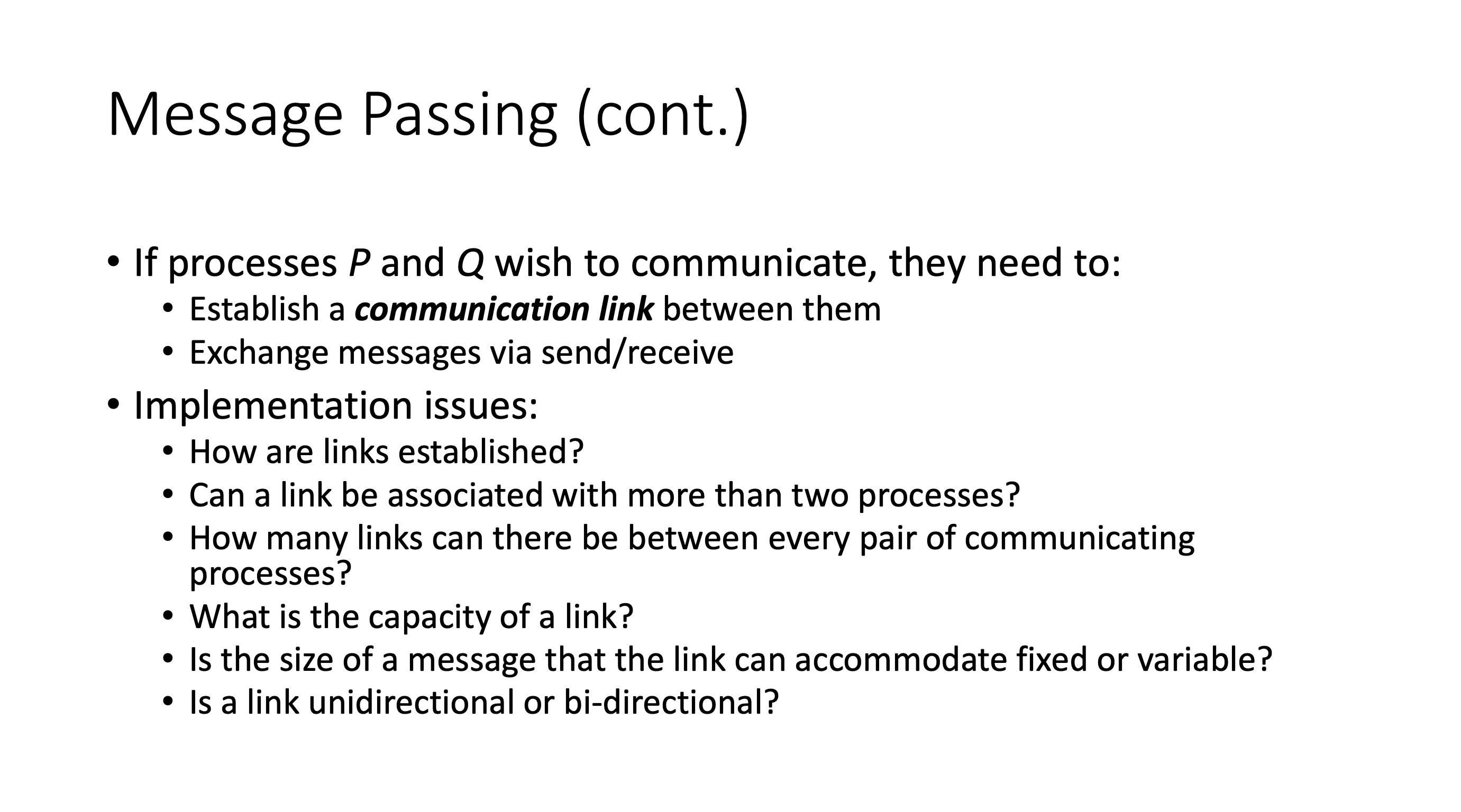


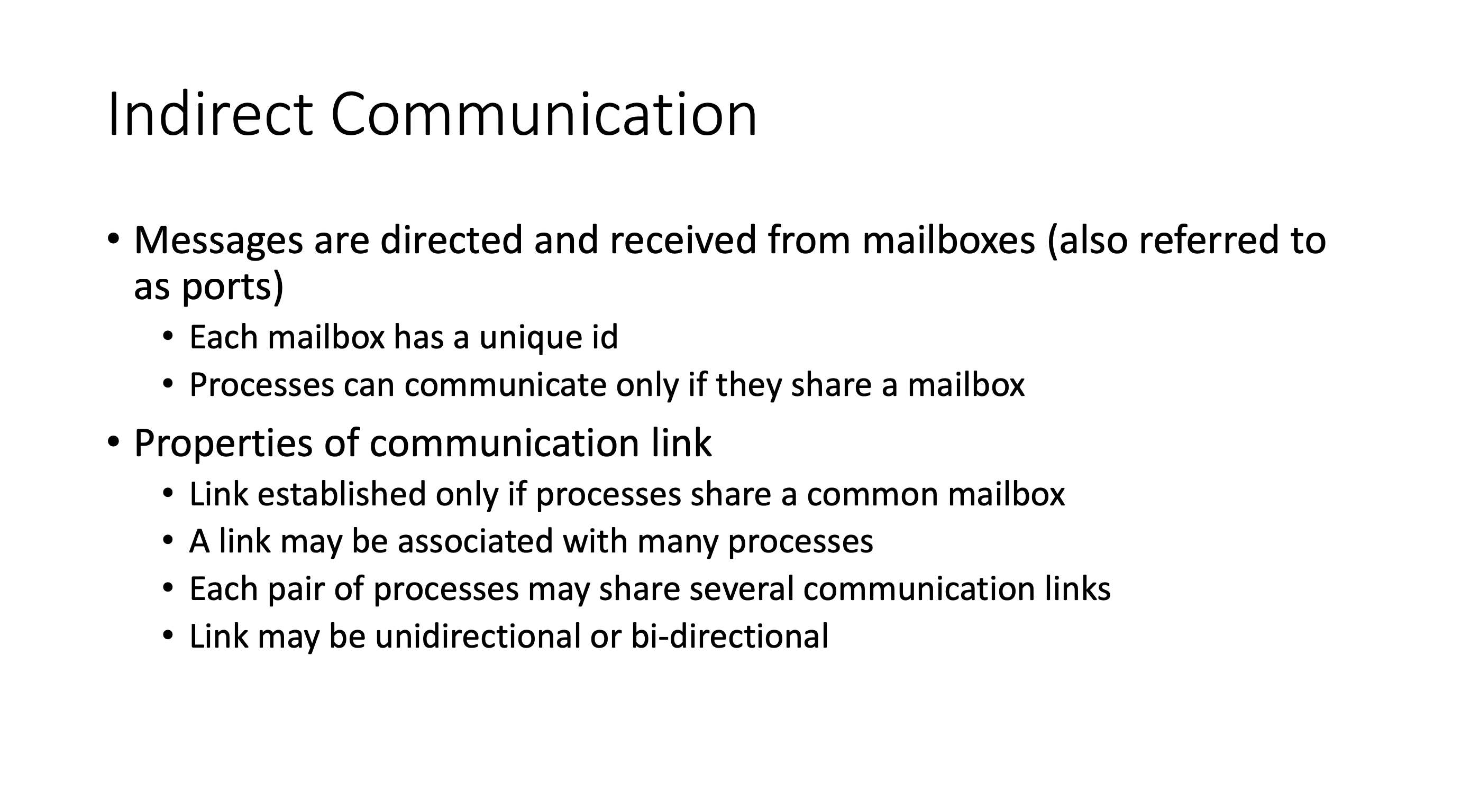
A good analogy for indirect communication is a drop off mailbox.
